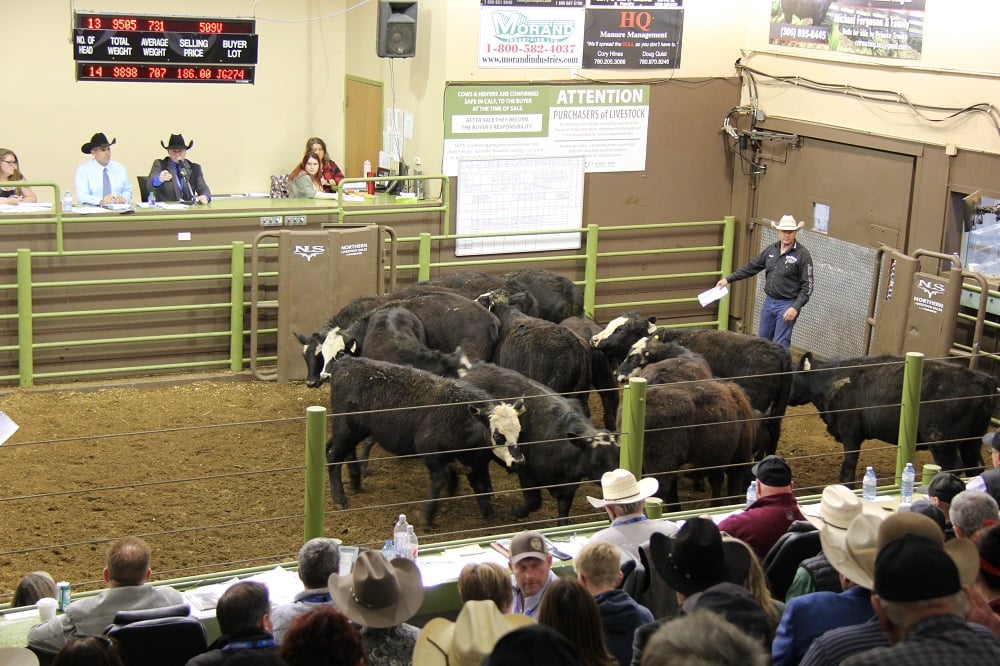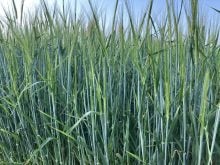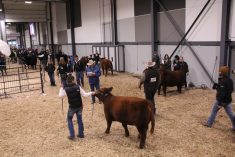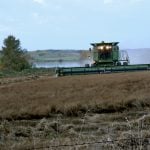Fed cattle
Large kill volumes through February and increased front-end supply in the U.S. have held the fed cattle market in a tight trading range. Fed cattle prices in Western Canada ranged from $161.31/cwt to $163.24/cwt over a four-week period. The fed steer average on March 11 was $161.72/cwt. While the fed average is $11.72/cwt higher than a year ago, input costs led to record-large losses at feedlots.
Pressure on the U.S. cash market has narrowed the basis. Even with the improved cash-to-cash basis, it was still -$14.56/cwt in early March, compared to -$7.49/cwt last year.
Read Also

Cattle Market Summary
Break-evens, cow and calf prices, plus market summaries courtesy of Canfax and Beef Farmers of Ontario. Cost of Production September…
Cattle-on-feed on February 1, 2022, was the largest on-feed total in February since 2001. At 1,118,198 head on feed at the start of the month, it was 11 per cent above last year and 17 per cent above the five-year average for February 1. Feeder cattle placements in January were four per cent lower than January 2021. Feeder cattle placements in the weight category over 800 lbs. were down 33 per cent from a year ago. Lightweight feeder placements were larger, with 30 per cent more steers and heifers under 600 lbs. placed on feed through January.
As of March 5, steer slaughter in Canada is down one per cent, totalling 284,059 head. Heifer slaughter is up five per cent from a year ago at 191,367 head. The wide basis in the first quarter has not affected fed cattle exports. Slaughter steer and heifer exports, including fed cows, are unchanged from a year ago at 81,555 head.
Deb’s outlook for fed cattle: Many issues are feeding livestock market volatility. Inflation is limiting consumer dollars and affecting beef pricing and sales. Feed grain costs, supply and logistic issues plague feedlot operations. Fed cattle supply is more manageable than a month ago; however, early calf placements in 2021 will move into the market ahead of what’s typically normal, increasing numbers again.
Fortunately, beef demand remains steady and seasonal trends seem to be intact. Spring generally offers a rally into annual highs. While prices should improve as feeders gain leverage, it would appear packers are not short of front-end supply, which may delay any significant price rally.
Feeder cattle
A looming rail strike, coupled with potential global feed grain supply issues, has pressured an already high feed-cost situation. Buyers are also paying attention to inflation and potential impacts on consumer spending as they work on their risk management strategies. As Russia invaded Ukraine, feeder cattle futures reacted.
Despite the uncertainty, feeder cattle prices held steady. The export market has created a solid floor since the start of 2022. Feeder cattle exports have increased significantly. Data to the end of February showed feeder cattle exports up 422 per cent at 47,897 head. The current export total is larger than the total number exported during the first half of 2021.
Lightweight feeder cattle increased steadily since the start of 2022. However, the price has dropped from the highest point at the end of February at $234.91/cwt to $231.13/cwt for 550-lb. steers as of March 11. The 550-lb. feeder prices are $1.15/cwt higher than mid- March 2021.
Heavier feeder cattle averages ranged from $188.00 to $189.41/cwt for the six weeks prior to mid-March, with the mid-March average at $188.08/cwt. This is $9.51/cwt higher than the same week in 2021. Considering the input cost increases, rising fuel and feed barley being 39 per cent above a year ago, the feeder price resilience shows optimism in the industry. The 850-lb. feeder cattle basis is -$5.39/cwt, compared to a positive $8.98/cwt last year and a five-year average for the same week of -$5.15/cwt.
The January 1 Canadian Cow Herd Inventory Report confirms the continued Canadian beef cow herd contraction, as total beef cow numbers are down another one per cent. This is a 12 per cent decline in 10 years. Those numbers, coupled with the five per cent reduction in replacement heifer numbers, indicate cow herd growth is not on the near horizon and feeder cattle supplies in Canada will remain smaller for the time being.
Deb’s outlook for feeder cattle: Recent moisture across the Prairies has buyers looking towards grass cattle needs. Lightweight grasser-type cattle will be supported over the next few months. Heavier feeder cattle will struggle as feed availability remains uncertain and feed costs grow. In the near term, feeder prices will likely trade mostly steady, with support from export sales. However, further interruptions to feed grain supply or increases in the cost of gain will limit any seasonal upside.
Non-fed cattle
Even as the fed cattle market struggles to find strength in the cash market, cull cow prices saw a normal first-quarter improvement. Inflation stretched consumer dollars and people looked to grinding or trim products. Prices reflect solid cull cow demand. The mid-March D1,2 cow average in Western Canada is $93.69/cwt, $7.69/cwt higher than the same week in 2021 and a $19.29/cwt improvement since the start of 2022.
Cow slaughter as of March 5 is 89,885 head, up six per cent from last year. Bull slaughter is down 30 per cent, totalling 1,586. Butcher bull exports are down 13 per cent at 3,538 head. Butcher bull price is $116.00/cwt, compared to $104.79/cwt in 2021.
Deb’s outlook for non-fed cattle: Increased living costs will lead to consumers stretching food budgets. This often means increased lower-priced beef cut sales. Barbeque season right around the corner will also boost ground beef demand, supporting the non-fed market. Expect cull prices to strengthen as supplies tighten seasonally and demand improves.
















